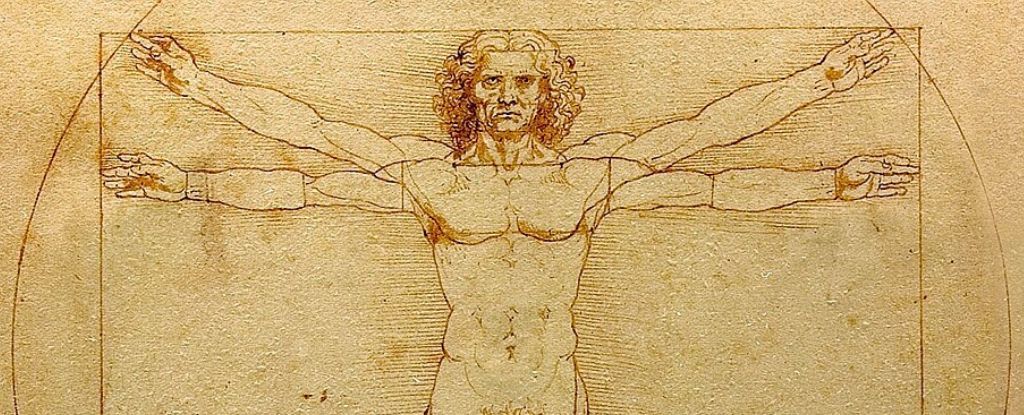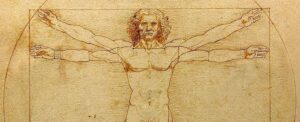
Leonardo da Vinci’s iconic drawing, the Vitruvian Man, has captivated scholars for over five centuries. Recent analysis by London dentist Rory Mac Sweeney has unveiled a hidden geometric detail that may explain the drawing’s enigmatic proportions. This discovery suggests that da Vinci’s understanding of human anatomy and geometry was far more advanced than previously recognized.
Mac Sweeney’s investigation focused on a detail located in the Vitruvian Man’s crotch: an equilateral triangle. According to his findings, this triangle could provide insight into why da Vinci selected the specific proportions for the arms and legs of the figure. The Vitruvian Man, created around 1490, is inspired by the work of Roman architect Vitruvius, who proposed that the ideal human body should fit within a circle and a square.
The drawing features a square that contains a “cruciform pose,” with the figure’s arms outstretched and legs drawn in. In contrast, a circle encompasses a posture where the arms are lifted and the legs are spread. Many have speculated that da Vinci’s proportions were based on the Golden Ratio; however, Mac Sweeney argues that the measurements do not align with this theory.
In his notes, da Vinci remarked, “If you open your legs… and raise your hands enough that your extended fingers touch the line of the top of your head… the space between the legs will be an equilateral triangle.” Mac Sweeney applied this concept and calculated the ratio formed by the spread of the man’s feet and the height of his navel, which came to approximately 1.64 to 1.65. This figure closely resembles the tetrahedral ratio of 1.633, a geometric standard established in 1917, used to determine the optimal packing of spheres.
Mac Sweeney’s background in dentistry informed his understanding of this ratio, as it parallels a triangular principle known as Bonwill’s triangle, which optimizes jaw function and has been in use since 1864. He suggests that the human jaw and other biological systems naturally organize around tetrahedral geometries, maximizing mechanical efficiency.
The implications of Mac Sweeney’s discovery extend beyond art. He posits that the tetrahedral ratio may reflect a universal principle governing human anatomy, suggesting that “human anatomy has evolved according to geometric principles that govern optimal spatial organization throughout the universe.” This perspective implies that da Vinci may have intuitively recognized fundamental truths about the mathematical nature of reality while creating the Vitruvian Man.
While the art community may take time to embrace Mac Sweeney’s assertions, the presence of the equilateral triangle in da Vinci’s notes indicates the significance of this detail. His findings have been published in the Journal of Mathematics and the Arts, marking a potential turning point in the understanding of one of art history’s most analyzed works.
Mac Sweeney’s exploration into the intersection of art and geometry opens new avenues for research and discussion about Leonardo da Vinci’s legacy. If accurate, this revelation could reshape how we view the Vitruvian Man and da Vinci’s broader contributions to art and science.






